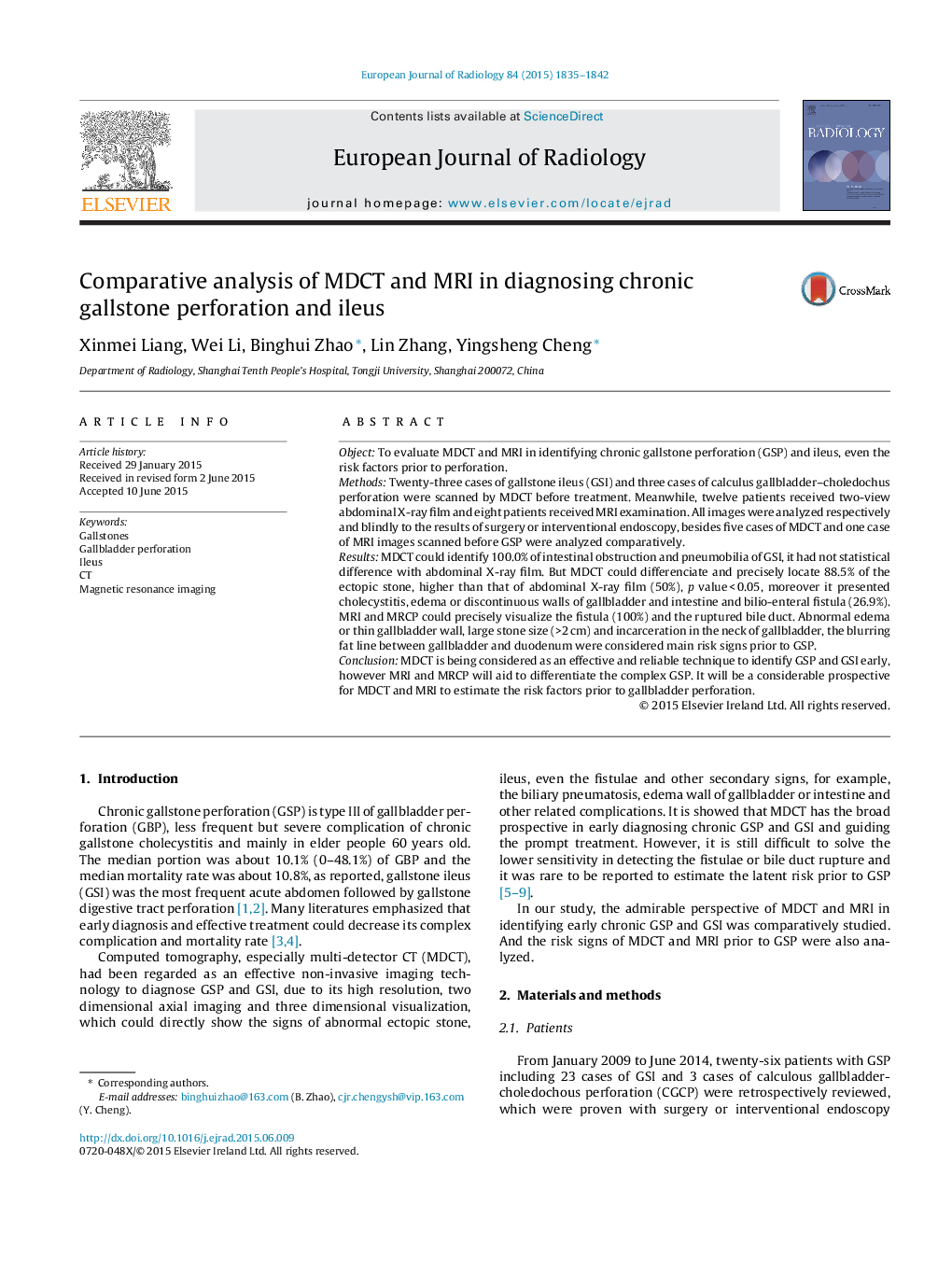| Article ID | Journal | Published Year | Pages | File Type |
|---|---|---|---|---|
| 4225160 | European Journal of Radiology | 2015 | 8 Pages |
•MDCT will be recognized as an effective and reliable noninvasive technique in identifying chronic GSP and GSI early.•MRI will aid to differentiate the fistula and complex GSP.•MDCT and MRI may be useful to estimate the risk tendency prior to GSP.
ObjectTo evaluate MDCT and MRI in identifying chronic gallstone perforation (GSP) and ileus, even the risk factors prior to perforation.MethodsTwenty-three cases of gallstone ileus (GSI) and three cases of calculus gallbladder–choledochus perforation were scanned by MDCT before treatment. Meanwhile, twelve patients received two-view abdominal X-ray film and eight patients received MRI examination. All images were analyzed respectively and blindly to the results of surgery or interventional endoscopy, besides five cases of MDCT and one case of MRI images scanned before GSP were analyzed comparatively.ResultsMDCT could identify 100.0% of intestinal obstruction and pneumobilia of GSI, it had not statistical difference with abdominal X-ray film. But MDCT could differenciate and precisely locate 88.5% of the ectopic stone, higher than that of abdominal X-ray film (50%), p value ˂ 0.05, moreover it presented cholecystitis, edema or discontinuous walls of gallbladder and intestine and bilio-enteral fistula (26.9%). MRI and MRCP could precisely visualize the fistula (100%) and the ruptured bile duct. Abnormal edema or thin gallbladder wall, large stone size (>2 cm) and incarceration in the neck of gallbladder, the blurring fat line between gallbladder and duodenum were considered main risk signs prior to GSP.ConclusionMDCT is being considered as an effective and reliable technique to identify GSP and GSI early, however MRI and MRCP will aid to differentiate the complex GSP. It will be a considerable prospective for MDCT and MRI to estimate the risk factors prior to gallbladder perforation.
